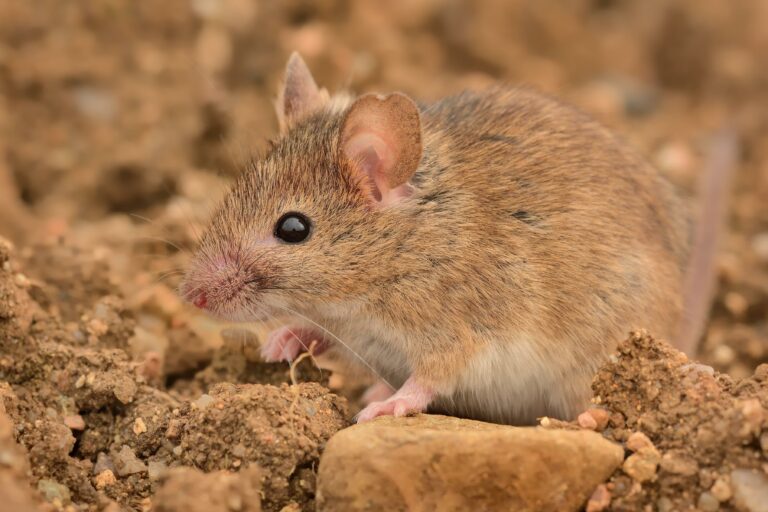Mus musculus

The house mouse reaches a head-body length of 70-110 mm, a tail length of up to 105 mm, and weighs up to 30 g. The fur on its upper side is grayish-brown, while the belly is lighter. House mice are globally distributed and, as the name suggests, are often found in buildings, especially in warmer months, but also outdoors (Schäfer 2018). They prefer to inhabit farmland, fields, and hedgerows. House mice reproduce throughout the year in many areas. In proximity to humans, they are often considered pests as they can cause damage, such as to grain stores (Southern 1965). Mus musculus is the ancestor of the laboratory mouse used today (Schäfer 2018).
Diet: Mus musculus is an omnivore. It feeds on animal matter such as worms and insects, but also consumes plant-based food such as seeds and plant parts (Le Roux et al. 2002).
Conservation status: The house mouse is considered “least concern” globally and is not subject to any specific conservation measures.
-
Le Roux, V et al. (2002)Diet of the house mouse (Mus musculus) on Guillou Island, Kerguelen archipelago, Subantarctic.” Polar Biology 25: 49-57.
-
Schaefer, M (2018)Brohmer – Fauna von Deutschland. Ein Bestimmungsbuch unserer heimischen Tierwelt: Quelle & Meyer Verlag GmbH & Co.
-
Southern, H (1965)Handbook of British mammals. Mammal society of the British isles. Blackwell Scientific Publications Oxford.